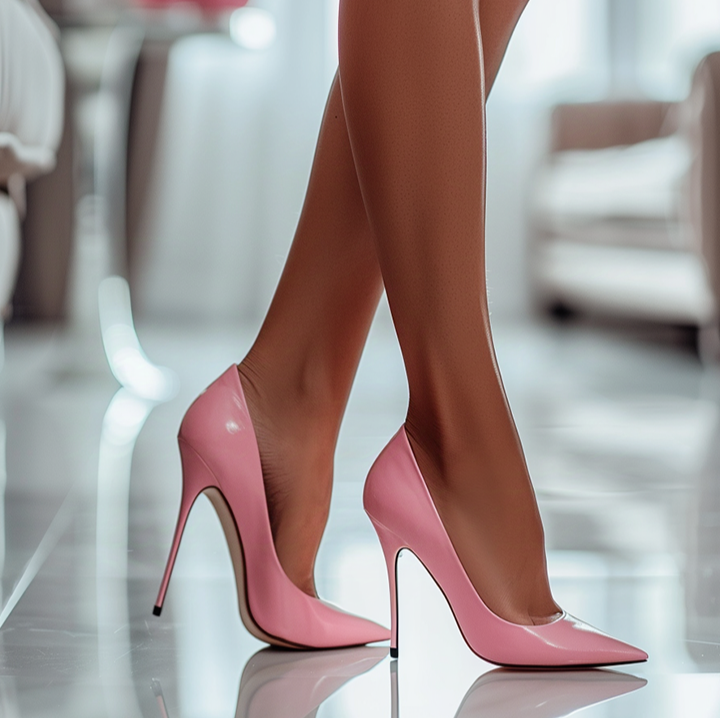High heels. We love them, we hate them, we sometimes even trip over them. But they’ve been around for so long that we rarely stop to ask: where did they come from, and why on earth do we wear them? The answer is surprisingly unexpected: high heels were originally worn by men! Yes, you read that right.
Let’s step back in time to explore how high heels walked their way from the feet of warriors to becoming a staple of women’s fashion.
Heels for Horsemen: The Origins of High Heels
It all started in 10th-century Persia (modern-day Iran), where high heels were first worn by soldiers. Why soldiers? It turns out heels helped them stay steady in their stirrups while riding horses, giving them better control and balance in battle. Imagine a group of fierce warriors with pointed heels, charging into combat. It’s a far cry from what we associate with heels today!
When Persian diplomats visited Europe in the 1600s, they brought their high-heeled shoes along, sparking a fashion trend. European men, fascinated by this exotic style, quickly adopted heels as a symbol of power and prestige.
Heels for Kings: From Warriors to Royalty
By the time the heels made it to France, they were fit for a king—literally. Louis XIV, the infamous “Sun King,” was obsessed with high heels. Standing at only 5’4”, he wore heels to boost his height and emphasize his royal stature. Louis even issued a decree stating that only nobility could wear red heels, and only he could wear heels decorated with elaborate scenes and designs. These heels were more than just shoes; they were status symbols.
During this period, men’s heels were chunky and square, made for showing off rather than for comfort. The higher the heel, the more powerful you were perceived to be. Heels became associated with wealth, power, and masculinity. Who knew?
The Switcheroo: When Women Stepped In
By the 1700s, women began to wear heels, too. But they didn’t stop at copying men’s styles—they made heels their own. Women’s heels became slimmer, more elegant, and pointed, evolving from practical riding tools into stylish accessories. Meanwhile, men started ditching heels altogether as fashion tastes changed, and practicality took over.
By the 1800s, men’s fashion had turned to flat shoes, and heels became a distinctly feminine trend. Heels were now seen as symbols of femininity and sensuality. They accentuated the curves of the legs and forced wearers to adopt a different posture, creating a certain allure that remains to this day.
Heels Through the Decades: From Glamour to Everyday Wear
In the 20th century, high heels went through a series of dramatic transformations. Hollywood glamorized stilettos in the 1950s, with stars like Marilyn Monroe and Audrey Hepburn rocking sky-high heels that defined the decade’s style. Heels became a staple for women’s fashion, signaling sophistication and elegance.
By the time the 1970s rolled around, heels took a wild turn with disco platforms, which both men and women embraced. Think John Travolta in “Saturday Night Fever.” It was a brief throwback to when men also wore heels—only this time, it was all about making a bold statement on the dance floor.
Today, heels come in every shape and style imaginable, from towering stilettos to comfortable block heels. They’re worn by everyone, everywhere—from boardrooms to brunch dates. Yet, the allure and mystery surrounding heels remain as strong as ever.
Why Do We Love (and Hate) Heels?
So, why do we still put ourselves through the discomfort of wearing heels? It’s simple: they make us feel good. Heels can add an extra bounce to our step, boost our confidence, and sometimes even make us feel a little taller than we actually are. Sure, they’re not always comfortable, but they’re worth it for that magical feeling.
Despite their journey from men’s fashion to women’s closets, high heels have stayed relevant for over a thousand years. They’ve seen battlefields, royal courts, Hollywood, and dance floors. Whether you’re strutting your stuff in a pair of classic pumps or wobbling in new stilettos, remember that heels are more than just shoes—they’re a piece of history.
So next time you slip into your favorite pair of heels, take a moment to appreciate their quirky past. Who knows? You might even feel a little bit like a Persian warrior or a French king. And maybe, just maybe, that’ll make those blisters a little more bearable.









